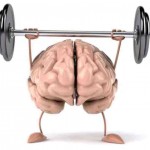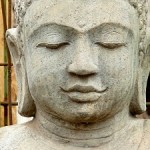 Do we really think better
Do we really think better
after exercising?
I find that if I take a 15-minute power walk or do a few minutes of yoga stretches before tackling a project, I am more focused and complete the work in less time. Is this just coincidence or is there real science behind the brain on exercise? Here’s what Justin Rhodes, an associate professor of psychology at the University of Illinois at Urbana-Champaign, has to say:
“After being cooped up inside all day, your afternoon stroll may leave you feeling clearheaded. This sensation is not just in your mind. A growing body of evidence suggests we think and learn better when we walk or do another form of exercise. The reason for this phenomenon, however, is not completely understood.
Part of the reason exercise enhances cognition has to do with blood flow. Research shows that when we exercise, blood pressure and blood flow increase everywhere in the body, including the brain. More blood means more energy and oxygen, which makes our brain perform better.
Another explanation for why working up a sweat enhances our mental capacity is that the hippocampus, a part of the brain critical for learning and memory, is highly active during exercise. When the neurons in this structure rev up, research shows that our cognitive function improves. For instance, studies in mice have revealed that running enhances spatial learning. Other recent work indicates that aerobic exercise can actually reverse hippocampal shrinkage, which occurs naturally with age, and consequently boost memory in older adults. Yet another study found that students who exercise perform better on tests than their less athletic peers.
The big question of why we evolved to get a mental boost from a trip to the gym, however, remains unanswered. When our ancestors worked up a sweat, they were probably fleeing a predator or chasing their next meal. During such emergencies, extra blood flow to the brain could have helped them react quickly and cleverly to an impending threat or kill prey that was critical to their survival.
So if you are having a mental block, go for a jog or hike. The exercise might help pull you out of your funk.”
This article was originally published in Scientific American with the title Why is it that I seem to think better when I walk or exercise?.


